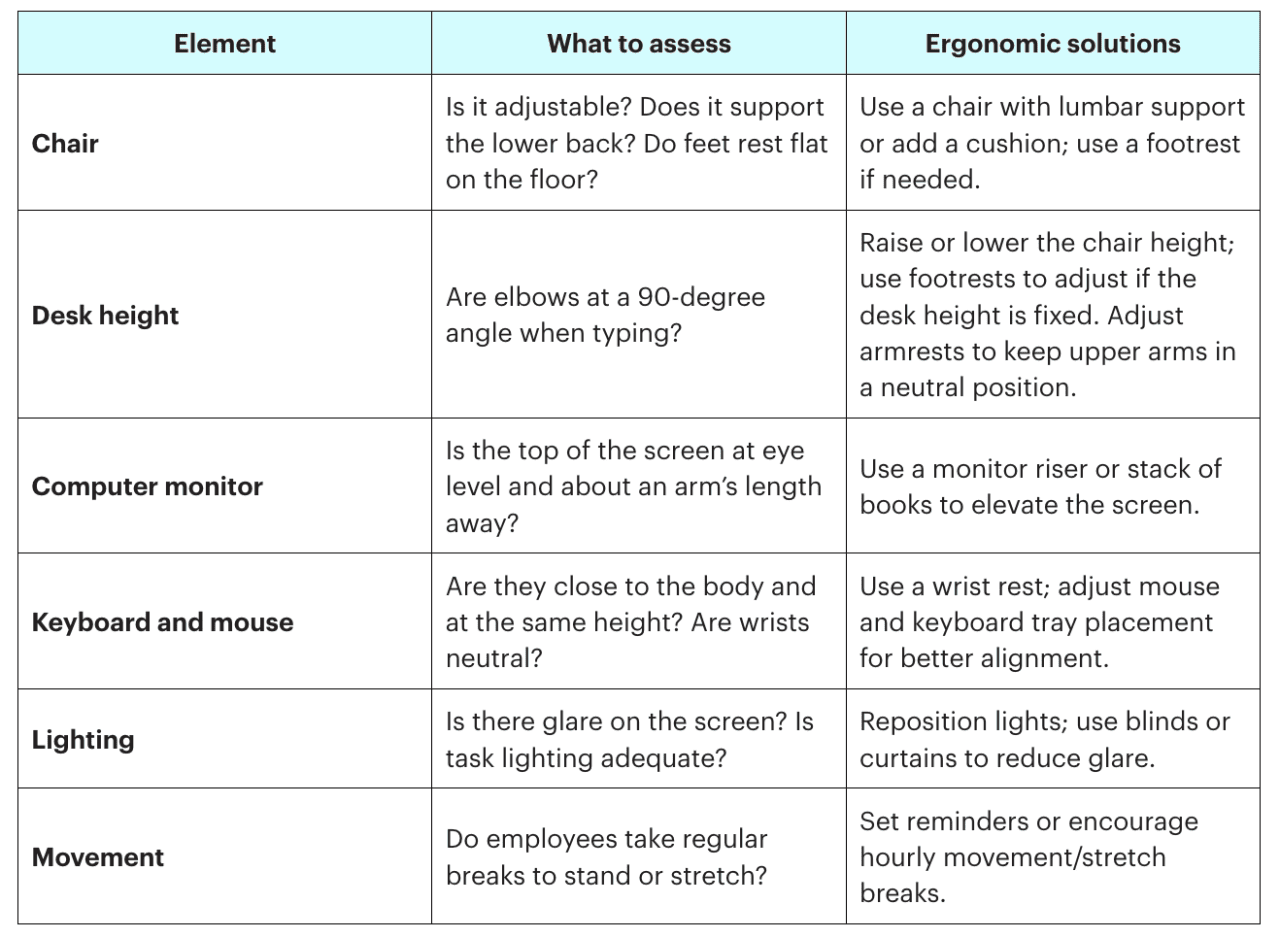Smart office ergonomics to help avoid workplace injuries

Andrey_Popov // Shutterstock
Smart office ergonomics to help avoid workplace injuries
According to data from the Bureau of Labor Statistics, musculoskeletal disorders (MSDs) — like back injuries and carpal tunnel syndrome — mean downtime for your business. They account for nearly 30% of all work-related injuries that require time off. That’s time and productivity most small businesses can’t afford to lose.
Improving your office ergonomics setup can help reduce those risks, keep employees healthier, and show your team that their well-being is a priority. NEXT explains why it’s a smart move for morale—and for business.
Common office ergonomics risks that can cause workplace injuries
You don’t need heavy machinery or hazardous materials to have workplace injuries. Desk jobs come with their own set of risks — especially when people sit for long hours, hunch over screens, or repeat the same motions every day.
Here are some of the most common office ergonomics issues:
- Repetitive motions: Typing, clicking, or handling tools without breaks can lead to strain injuries.
- Poor posture: Hunching over laptops or slouching in chairs can stress the neck, back, and shoulders.
- Prolonged sitting or standing: Staying in one position too long affects circulation and joint health.
- Eye strain: Long screen time without proper lighting or breaks can cause headaches and fatigue.
According to BLS data, musculoskeletal disorders led to a median of 14 days away from work.
How to improve your office ergonomics
You don’t need to be an ergonomics expert to make meaningful improvements. Whether you’re setting up a small office or managing a remote team, it starts with a quick ergonomic assessment — and a few smart, low-cost changes.
Use this simple checklist to spot potential issues and make fixes that support comfort, posture, and productivity:

NEXT
How business insurance can help with office ergonomics injuries
Even with a solid office ergonomics setup, injuries can still happen — especially from repetitive strain or poor posture over long periods of time. If that happens, workers’ compensation insurance can help protect your business from some of the costs.
In most states, workers’ comp coverage is required by law if you have employees. It’s not just smart protection — it’s also a legal necessity in many cases.
If an employee develops a musculoskeletal injury like carpal tunnel or back pain, workers’ comp can help cover:
- Medical expenses for doctor visits, rehab, or treatment
- Lost wages if the employee needs time off to recover
- Ongoing care for longer-term injuries
- Legal costs if there’s a claim, dispute or settlement
4 office ergonomics tips for remote workers
Remote or traveling workers often make do with dining chairs, low screens, or cramped desk space. Over time, those setups and awkward postures can lead to the same repetitive strain injuries, such as neck strain, wrist pain, and screen fatigue, seen in the office.
Here’s how you can support better office ergonomics for your remote or hybrid team:
- Share practical guidance: Provide checklists or videos to help team members assess their home setups. For more detailed guidance, check out the OSHA Computer Workstation Checklist and ergonomic self-assessment resources from the National Safety Council.
- Offer a remote workspace stipend: A small budget for home office chairs, external keyboards or monitor risers can make a big difference.
- Encourage regular movement: Set the tone with flexible breaks or stretch reminders during the day.
- Make posture part of your culture: A quick reminder during meetings like, “take a second to stretch” goes a long way.
How to train employees on office ergonomics
Ongoing training is essential to make office ergonomics part of your workplace culture. Just a few consistent practices can go a long way, including:
- Make ergonomics part of onboarding: Include a simple ergonomics checklist in your new hire materials, whether your team is in-office or remote.
- Reinforce healthy habits: Use posters, internal messages or quick Slack reminders to nudge employees to stretch or take breaks.
- Schedule regular refreshers: Once or twice a year, revisit best practices through a short meeting or email.
- Model good behavior: When managers adjust their own setups or take standing breaks, it signals that health and comfort matter.
Ergonomics isn’t a one-time setup — it’s a habit. The more your team knows and practices it, the more likely they are to avoid preventable injuries and stay focused on their work.
This story was produced by NEXT and reviewed and distributed by Stacker.
![]()



